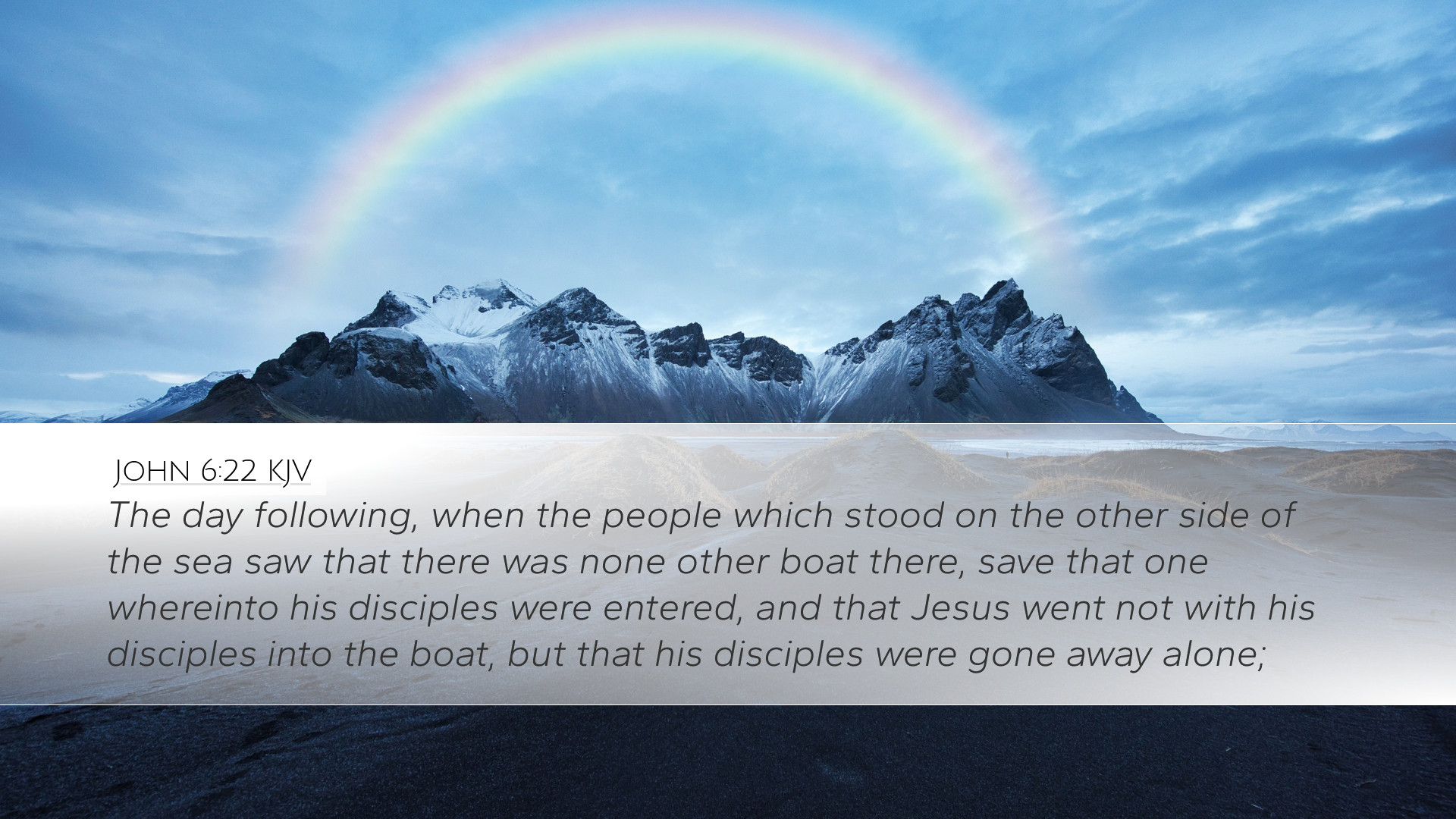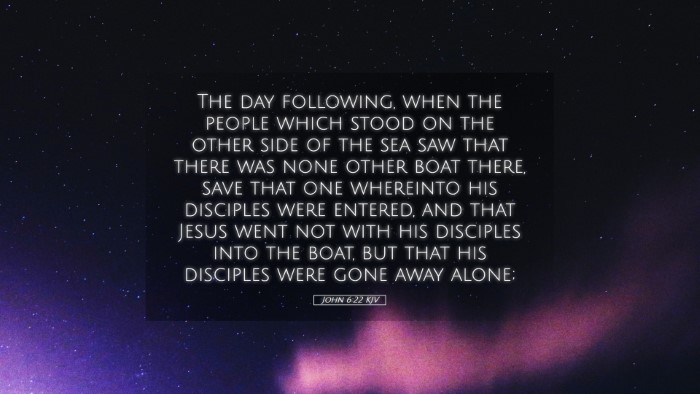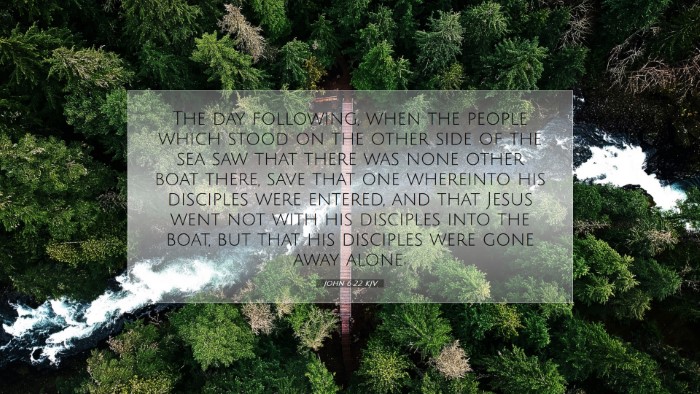Bible Commentary on John 6:22
Verse Context: John 6:22 states, "The day following, when the people which stood on the other side of the sea saw that there was none other boat there, save that one whereinto his disciples were entered, and that Jesus went not with his disciples into the boat, but that his disciples were gone away alone."
Introduction
This verse serves as an essential transition point in the Gospel of John, marking the shift in focus from the miraculous feeding of the five thousand to the deeper teachings about Christ as the Bread of Life. Understanding this verse requires examining the actions and thoughts of the people, along with the theological implications behind them.
Insights from Matthew Henry
Matthew Henry emphasizes the curiosity of the people who seek Jesus following the miracle of the loaves and fishes. He comments on the nature of their pursuit: they are drawn not by spiritual hunger but by the superficial allure of miraculous signs. According to Henry:
- Spirit of Inquiry: The people are depicted as active in their search for Christ, symbolizing a natural human inclination to seek out providers of blessings.
- Superficial Motives: Their intention is questioned, as they seek Jesus not for spiritual nourishment, but for more earthly provisions, demonstrating a lack of understanding of the spiritual significance of His miracles.
Insights from Albert Barnes
Albert Barnes, in his commentary, highlights the logistical elements surrounding the scene. He notes the miraculous feeding occurred on the previous day, and now the crowd is perplexed about Jesus’ whereabouts:
- Significant Absence: Barnes points out that Christ's absence from the boat raises curiosity among the people, indicating the miraculous nature of His movements and the right of Jesus to withdraw from immediate crowds.
- Reaction of the People: Barnes discusses the implications of the crowd's reaction; their continued search for Jesus signifies a desire for further signs, which shall lead to a critical lesson about the true nature of discipleship and faith.
Insights from Adam Clarke
Adam Clarke offers a more analytical approach, suggesting interpretations that delve into the nature of human behavior in relation to divine intervention:
- Seeking the Wrong Reasons: Clarke argues that the motivation behind the crowd seeking Jesus reflects a common human challenge: the pursuit of Christ for material benefits rather than a sincere desire to delve into spiritual truths.
- Divine Sovereignty: He alludes to the importance of recognizing Jesus' sovereignty over the situation; the people must come to terms with the reality that Christ cannot be manipulated for mere earthly gain.
Theological Reflections
The commentary on this verse brings several theological reflections that are meaningful for pastors, theologians, and serious students of the Bible:
- The Call to Spiritual Depth: This verse articulates the transition from physical needs to spiritual understanding. There's a necessary call for believers to elevate their understanding of Jesus beyond mere miracle worker to recognize Him as the spiritual sustenance of life.
- Human Nature and Divine Purpose: The pursuit of Christ by the crowd illustrates the tension between human motivations and the divine purpose of His mission. Recognizing this can guide a deeper understanding of the Christian faith's transformative power.
- Role of Discipleship: The mention of the disciples alone in the boat serves as a foreshadow of the mission and separateness of those who truly follow Him compared to the multitudes who seek Him for shallow reasons.
Conclusion
John 6:22 sets the stage for a profound discourse about the Bread of Life, transitioning from the miraculous to the spiritual, nudging readers to examine their own motives for seeking Jesus. By synthesizing insights from Henry, Barnes, and Clarke, the commentary encourages a journey towards understanding Christ beyond the material, inviting believers to delve into the depths of true discipleship and spiritual fulfillment.


